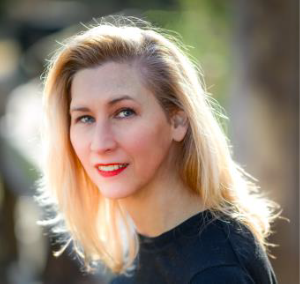Wendy Nystrom
WILL MUSHROOMS SAVE US?
Wendy Nystrom
Will Mushrooms Save Us?
I began looking into how fungi and mycorrhiza could combat climate change. Here’s what I found.
Click to view images larger.
Mushrooms, or fungi, are more than meets the eye. I’ve always enjoyed eating mushrooms and had heard of mushrooms being used in packaging, but I had no idea how important and versatile they were until I interviewed Dr. Michael Amaranthus about his children’s book, Mike O’Rhiza – Earth’s Best Friend.
I first got to know Dr. Amaranthus through my childhood friend Linda Woodrow-Gray, who provided the artwork for his book. He is a retired research soil scientist for the U.S. Dept. of Agriculture and Associate Adjunct Professor at Oregon State University and has authored and co-authored over 100 scientific papers. Dr. Amaranthus and his wife Eileen founded Mycorrhizal Applications Inc., a biotechnology company that grows and uses mycorrhizal fungi to increase food production using fewer chemical fertilizers and pesticides. These products are now used in over 30 countries.
When Linda asked me if I was interested in interviewing Dr. Amaranthus, I leaped at the opportunity as I am always looking for material I can use to make complex environmental topics more accessible for people who don’t work in the field.
In reading Mike O’Rhiza – Earth’s Best Friend, I learned that mycorrhiza, or the fungal root, protects, nourishes, communicates, and parents other plant life. It also acts as a miner, a wizard, an internet expert, a conductor, a carpenter, a policeman, an explorer, and a doctor. And it’s a picture book! But don’t underestimate the powerful messaging you can find in text written for kids. As this book and conversation with Dr. Amaranthus piqued my curiosity, I began looking into how fungi and mycorrhiza could combat climate change. Here’s what I found.
Mycorrhiza for Carbon Capture
Dr. Amaranthus’ scientific articles discuss how mycorrhizae form symbiotic relationships with plants, helping their roots absorb the water and nutrients they need. In his article “Can Soil Fungi Fight Climate Change? Keys to mitigate global warming hide beneath our feet,”1 he explains how increasing CO2 levels are damaging our soil health, ultimately threatening food production. He advises that we should “plant” carbon by using arbuscular mycorrhizal fungi, which produce the sticky protein glomalin that results in vast carbon sequestration and carbon storage in the ground2.
Fungi as Meat Alternatives
In addition to supporting soil and agricultural health, fungi are being used as a meat alternative, where various types of mushrooms are used for fried “chicken3” or “steak4” as a way to cut down on meat consumption5, resource depletion, and greenhouse gas emissions.
Fungi for Shipping and Packaging
Packaging companies are using mycelium6, or the root network of fungus, to make packing materials that rival Styrofoam, a known carcinogen that will never degrade. Mushroom-based packing material is natural, lightweight, biodegradable, and easy to produce at a low-cost point —and it can be molded into almost any shape required to protect the product being shipped7.
Leather Alternatives
“Mushroom Leather” is a relatively new concept, where some luxury brands are moving away from leather not only in response to animal cruelty but the pollution associated with the tanning process. Mushroom leather is created by growing fine mycelium in trays where it is then tanned and processed to look like leather. It is currently an expensive process and apparently not yet biodegradable, so manufacturing is still in small quantities and only offered by select brands, such as Hermes, Adidas, and Lululemon8.
Fungi for Health and Wellness
Several recent medical studies 9 10 11 discuss the possibility that consumption of fungi, specifically “Lion’s Mane, or hericium erinaceus, may prevent damage related to Alzheimer’s disease. Other research documents how consuming certain fungi was shown to have improved cognitive abilities12 and to have reduced the symptoms of anxiety and depression13. We have seen this interest explode recently with the proliferation of fungi and mushroom-based coffees and teas being offered in cafés.
Using Fungi to Prevent Wildfire?
Wildfire mitigation is a topic I often cover, so when the article, “Can Mushrooms Prevent Megafires?” by Stephen Robert Miller14 was sent to me, I was intrigued. Miller, who is an award-winning science journalist, writes: “With the right kind of fungi, we can do in five years what nature could take 50 years to a century to do: create organic soil.”
When the federal government passed the Inflation Reduction Act, nearly $5 billion was committed to wildfire mitigation through thinning forests covering 50 million acres across the Western U.S. over 10 years. Prescribed burn is the standard methodology used, however, with high winds or untrained personnel, the risk of starting a wildfire is high. Miller advocates for supporting this planned felling of trees by using fungi to help decompose trunks and branches on site, rather than taking costly steps to haul them out. This process would yield locally produced compost and support the health of the ecosystem from which it came. Miller writes: “Mycelium, the often unseen, root-like structure of the fungi, secretes digestive enzymes that release nutrients from the substrate it consumes. Whereas a flame destroys nearly all organic nitrogen, mycelium can fortify nitrogen where it’s needed in the forest floor.”
Miller explains that strategically cultivating fungi in densely wooded areas is less labor-intensive and cheaper than traditional forest management practices: “Standard thinning costs somewhere around $3,000 per acre, about a third of which is spent hauling out or burning the slash. Using mycelium could drastically reduce that cost.”
Of all the uses for fungi I’ve encountered, this is the one I’m most excited about. If we could employ effective teams to plant and cultivate the proper forms of fungi in our forests, this methodology could be a game changer for the wildfire mitigation and risk industry.
Citations
- https://bigfootmyco.com/ask-dr-mike-can-soil-fungi-fight-climate-change/
- https://www.easyanddelish.com/mushroom-steak/
- Fall 2021 FUNGI Volume 14:4 23
- https://www.hsph.harvard.edu/nutritionsource/food-features/mushrooms/
- https://jbiomedsci.biomedcentral.com/articles/10.1186/s12929-016-0266-z
- https://www.moekodesign.com/post/mushroom-mycelium-packaging
- https://mokufoods.com/blogs/nutrition/9-types-of-mushrooms-that-make-great-meat-replacements#:~:text=Use%20the%20mushrooms%20to%20replace,popular%20recipes%20for%20this%20mushroom.
- https://mushroompackaging.com
- https://www.ncbi.nlm.nih.gov/pmc/articles/PMC7826851/
- https://pubmed.ncbi.nlm.nih.gov/18844328/
- https://pubmed.ncbi.nlm.nih.gov/20834180/
- https://pubmed.ncbi.nlm.nih.gov/20834180/
- https://www.smithsonianmag.com/smart-news/this-mushroom-based-leather-could-be-the-next-sustainable-fashion-material-180979170/)
- https://www.washingtonpost.com/climate-solutions/2023/07/10/wildfire-prevention-mushroom-composting/

Wendy Nystrom
Wendy Nystrom is an Environmental Subject Matter Expert and the host of Environmental Social Justice (ESJ), an online webcast that bridges the chasm between environmental and climate experts and the general public.
She holds a MA/BA Combined degree in Geology/GeoChemistry from Boston University and a Certificate in Sustainability from UCLA. She has spent her career focused on pollution, environmental risk management, professional liability, and climate change where her combined knowledge in science, technology, and risk has provided her with a unique view into companies’ exposures and prevention practices.
This evolved background is what ultimately triggered her desire to focus on sustainability using communication and outreach to focus on advancing existing technologies to reduce our negative externalities and enhance sustainable development as well as social justice / DEI.
LISTEN TO ENVIRONMENTAL SOCIAL JUSTICE PODCAsT ON
or anywhere you get your podcasts.
Photo (left) by Fabian Wiktor
Imagining Our Way into Beloved Economic Futures
Naomi McDougall Jones
Will Mushrooms Save Us?
Wendy Nystrom
The Rights to Repair Wheelchairs, Tractors and Community
Amanda Marie Gipson

















































